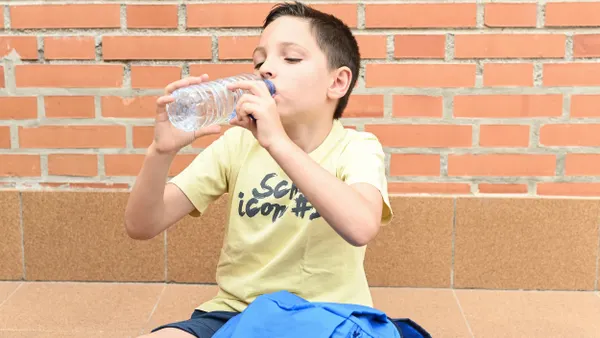Dive Brief:
- Arizona has hired the United States’ first state-level chief heat officer to coordinate the implementation of its first Extreme Heat Preparedness Plan, released on March 1.
- The new role will be held by Eugene Livar, who has worked at the Arizona Department of Health Services since 2012, amid growing awareness that climate change-driven extreme heat poses major public health risks. 2023 brought Arizona’s hottest summer on record, with the state’s emergency rooms seeing more than 4,000 heat-related visits, the new plan says.
- In preparation for this summer, Arizona has hired a statewide cooling center coordinator to improve the network of spaces where people can go for respite from the heat. The state plans to deploy at least six solar-powered, mobile cooling centers made from shipping containers and pay state employees to work at centers, which the state says have previously faced staffing challenges.
Dive Insight:
Until now, chief heat officers have been the domain of local governments in the U.S. In 2021, Miami-Dade County appointed a chief heat officer and Phoenix selected a director to lead its Office of Heat Response and Mitigation. Los Angeles appointed a chief heat officer in 2022.
“From the outset, a big part of this work has been un-siloing, coordinating and collaborating, and building plans with other departments,” LA’s chief heat officer, Marta Segura, said at a June 2023 webinar.
As a state-level chief heat officer, Livar is tasked with similar work. He will coordinate heat-specific efforts between agencies on shelter, energy, health and disaster response, according to Arizona’s Extreme Heat Preparedness Plan.
“This appointment will better prepare the entire state, including those who live in smaller cities and rural areas that have fewer resources to address extreme heat on their own,” said Ladd Keith, an assistant professor at the University of Arizona’s School of Landscape Architecture and Planning, in an email.
People can fall prey to extreme heat exposure in numerous ways, including dehydration, heat cramps, heat exhaustion, heat stroke or death, the plan says. Extreme heat also worsens air quality by increasing ground-level ozone and the concentration of particulate matter.
Financial costs result from these health risks, which pose an even greater danger to vulnerable populations such as older people, young children, outdoor workers and people experiencing homelessness. In 2022, emergency department costs due to heat-related illnesses were six times higher than in 2008, the plan says.
Some scientists are already predicting that this summer has a good chance of being hotter than last year’s record-breaker, and Arizona’s plan charts a path forward. Although some heat officials and experts have expressed skepticism about the value of cooling centers, Arizona’s plan looks to optimize its network.
“Though various evolutions of a cooling center network have been operating for many years, there are numerous gaps in coordination, funding, and communication,” the plan says. The new cooling center coordinator will work with local and community partners to choose the best locations for centers, ensure standards and collect data that can be used for better planning.
The state said in its plan that it is directing more money to hazard mitigation and emergency response through the fiscal year 2025 executive budget. Local governments will be able to access $10 million in a revolving loan fund for hazard mitigation efforts.











